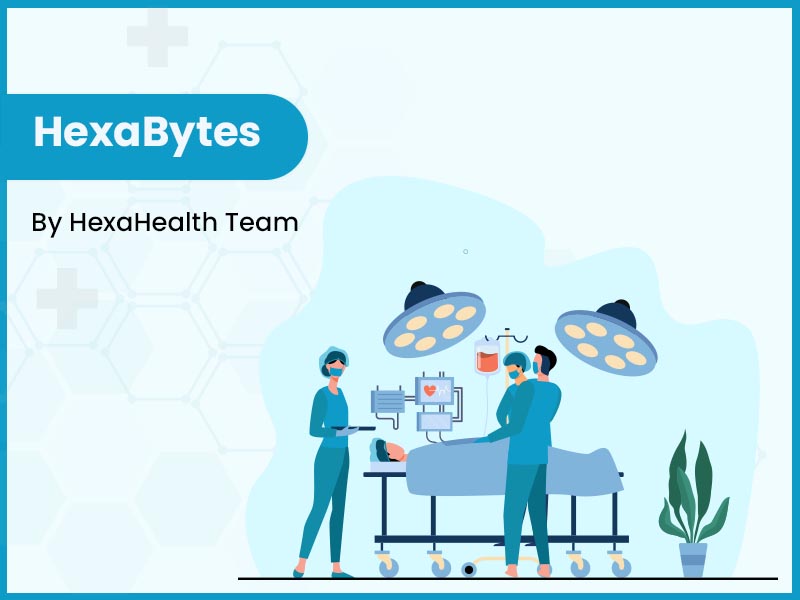Sebaceous Cyst vs Lipoma - What are the Major Differences?

Quick Summary
- Lipomas and cysts are two common types of lumps that can be found under the skin.
- Lipomas are benign (non-cancerous) growths of fat cells.
- Cysts are sacs filled with fluid, air, or other material.
Finding a lump or bump on your body can be alarming and worrying, especially when you do not know what it is and where it came from. Lipomas and cysts are two common types of lumps that can be found under the skin. They are typically benign (non-cancerous) collections of cells formed on various body parts. These lumps are treatable and can usually be removed by a skilled and experienced dermatologist or plastic surgeon.
It may be a relief to know that the abnormal growths under your skin are harmless benign lumps. However, you may wonder what these are, how they differ, and what to do about them. While lipomas and cysts may look extremely similar, they are different types of growth. Continue reading the blog to learn about the difference between cyst and lipoma.
What is a Cyst?
A cyst is a slow-growing semi-solid or liquid-filled lump found under the skin, anywhere on the body (mostly on the head or neck).
- These common, harmless lumps can be as small as a pea or as large as a grapefruit. They usually have a spot-like dark opening at the top.
- Cysts form when skin cells don’t shed properly and move deep into the skin layers, where they multiply.
- The sacs formed by these skin cells are filled with keratin protein with an oily, cheese-like texture.
- However, cysts that develop from other types of cells may be filled with different substances.
Cysts can be of several types. The most common types of cysts include:
- Epidermoid cyst: Present in the superficial of the uppermost layer of the skin, usually caused by a buildup of keratin.
- Dermoid cyst: Found in the dermis (middle layer of skin).
- Sebaceous cyst: Originates from the sebaceous glands, caused by damage or blockage of the glands.
- Ganglion cyst: A round, gel-filled lump usually develops along the tendons or joints of wrists, hands, ankles, and feet.
- Pilonidal cyst: An abnormal pocket in the skin that forms at the top of the cleft of the buttocks.
- Ovarian cyst: Fluid-filled sacs that develop in one or both ovaries.
- Pilar cyst: A skin-coloured bump that forms under the skin's surface and is usually found on the scalp.
- Mucous cyst: A fluid-filled swelling that develops on the lip or mouth.


What is a Lipoma?
Lipoma is a benign overgrowth of fat that grows between your skin and muscle. It is very soft and can move under the skin when pressed. While lipomas can appear anywhere on your body, they most commonly emerge on the forehead, neck, shoulders, back, chest, abdomen, arms, buttocks, and thighs. Lipomas are harmless and rarely get infected. However, if they grow and press on nerves, they can become painful and may need to be removed.
Lipomas can be of several types, including blood vessels or other tissues apart from fat. These types include:
- Conventional: The most common type of lipomas containing white blood cells.
- Angiolipoma: It contains fat and blood vessels and is usually painful.
- Fibrolipoma: It is made up of fat and fibrous tissue.
- Myelolipoma: It contains fat and tissues that produce blood cells.
- Hibernoma: Compared to most other lipomas containing white fat, hibernoma contains brown fat.
- Pleomorphic: It contains fat cells of varied sizes and shapes.
Difference between Cyst and Lipoma
A cyst and a lipoma can feel and look similar in the early stages.
Cysts are usually smaller and can appear on the head and neck, whereas lipomas can be larger and mostly appear on the forehead, neck, shoulders, back, chest, abdomen, arms, buttocks, and thighs.
As cysts grow, they feel firm as an egg under the skin without excessive movement. On the other hand, lipomas are present deeper under the skin, feel soft, and can be slightly moved under the skin when touched.
Cysts and lipomas also differ in terms of their causes and symptoms. The following table compares the causes and symptoms of these two types of lumps.
| Parameter | Cysts | Lipomas |
| Causes |
Cysts form due to various reasons, such as:
The exact cause depends on the type of cyst:
|
The cause of lipomas is not known. It is believed that they are inherited. Some conditions that can cause multiple lipomas to include:
|
| Parameter | Cysts | Lipomas |
| Symptoms |
Internal cysts near organs like the kidney or liver do not show any symptoms. When symptoms do occur, they vary depending on the location and type of the cyst. Some common symptoms include:
|
Many people with lipoma do not notice any symptoms. The characteristics and symptoms of lipomas vary from person to person. The most common ones include the following:
|
| Parameter | Cysts | Lipomas |
| Risk Factors |
|
|
| Parameter | Cysts | Lipomas |
| Diagnosis |
|
|
| Parameter | Cysts | Lipomas |
| Treatment |
There is no need for treatment if the cyst is not causing any problems. However, if the cyst is painful, it may be treated with fluid removal or surgery. Several treatment options for a cyst include: Injection: The doctor may inject medication into the cyst to reduce redness and swelling. Drainage: This method involves an incision in the cyst and squeezing its contents out. However, there are chances of cyst recurrence with this method. Surgery: It involves removing the complete cyst, fluid, and outer encasing. With this method, the chances of cyst recurrence decrease. |
Mostly a lipoma that does not need treatment. However, if it bothers you, your healthcare provider will make you undergo lipoma removal surgery, a minor outpatient surgery. |
| Parameter |
Cysts |
Lipomas |
| Risks and Complications |
|
|
Takeaway
Several types of lumps form under the skin, most of which are benign, such as cysts and lipomas. A cyst is a fluid-filled lump that normally develops on the head and neck, whereas a lipoma is a fat-filled lump that normally develops on the forehead, neck, shoulders, back, chest, abdomen, arms, buttocks, and thighs.
Finding a lump under the skin can be alarming. While most cysts and lipomas do not require treatment, removing them is best if the lump affects your quality of life. You can contact a healthcare expert at HexaHealth for a diagnosis and treatment plan. Furthermore, we will help you connect with the right dermatologist or plastic surgeon to get your cysts and lipomas removed.
Frequently Asked Questions
How can you differentiate between a cyst and a lipoma?
Can a cyst be mistaken for a lipoma?
Yes, a cyst is usually mistaken for a lipoma and vice versa due to its similar appearance, especially in the early stages. A proper diagnosis can help differentiate between these two types of cysts.
Is a lipoma a cyst or tumour?
While many confuse lipomas with cysts, they are not the same. Lipomas are slow-growing fatty tumours located between the skin and muscles. They are not cancerous and are usually harmless.
Is a lipoma lump hard or soft?
Lipomas are soft lumps that grow under the skin and can develop anywhere on the body. They feel rubbery and easily move under the skin when you touch them.
Can a lipoma become cancerous?
No, a lipoma cannot become cancerous. It is a benign soft tissue tumour that is usually harmless. Tumours of the fat cells that become cancerous are called liposarcomas.
What happens if you squeeze a lipoma?
Squeezing out a lipoma is a treatment option for removing the lump. However, it should only be performed by an experienced healthcare provider. Doctors advise against squeezing it yourself as one mistake can lead to problems like infections. Moreover, it may leave a big scar for a lifetime.
What happens if a lipoma is not removed?
Lipomas are usually harmless and do not require treatment. However, a deep lipoma, if left untreated, can press on internal organs or nerves, causing symptoms like constipation, nausea, and vomiting.
When should a lipoma be removed?
Lipomas are usually harmless and do not require treatment. However, a lipoma must be removed when it:
- Grows quickly or becomes large.
- Causes symptoms like discomfort and pain.
- Has a bothersome look.
- Interferes with normal bodily functions.
Do lipomas hurt when pressed?
What is the main cause of lipoma?
The exact cause of lipomas isn’t known. As they tend to run in families, doctors assume that genetic factors play a role in their occurrence.
Why do people get lipomas?
Healthcare professionals are not sure what causes lipomas’ development. They are believed to be inherited. A person is more likely to develop a lipoma if someone in their family has one. Certain conditions can cause multiple lipomas, which include:
- Gardner syndrome
- Madelung’s disease
- Dercum’s disease
- Hereditary multiple lipomatosis
How do you dissolve a lipoma naturally?
Although there is no evidence to back up these claims, some natural remedies that are believed to dissolve lipomas include:
- Natural oils such as flaxseed and neem
- Black pepper (mixed with natural oil or tea)
- Turmeric (mixed with neem or flaxseed oil)
- Indian frankincense
- White cedar
What is the difference between lipoma and epidermoid cysts?
While a lipoma is a lump filled with fat present between the skin and muscles, an epidermoid cyst is filled with keratin protein and is present in the superficial of the uppermost layer of the skin.
What is the difference between lipoma and ganglion cysts?
The main difference between ganglion cysts and lipomas is that ganglion cysts are fluid-filled lumps of tissue, whereas lipomas are lumps filled with fat. Ganglion cysts develop along tendons and joints of wrists or hands. On the other hand, lipomas most commonly develop on the forehead, neck, shoulders, back, chest, abdomen, arms, buttocks, and thighs. Furthermore, a ganglion cyst allows for the passage of light when light is shown to the area for abnormalities, while lipomas do not.
What is the difference between lipoma and dermoid cysts?
The primary difference between a lipoma and a dermoid cyst is its contents. While a dermoid cyst is a sac-like growth that contains structures like fluid, hair, teeth, or skin glands, a lipoma is filled with fat and sometimes blood vessels. A dermoid cyst is usually present at birth. On the other hand, a lipoma is believed to be inherited.
Last Updated on: 24 November 2022
Reviewer

Dr. Priyanka Sharma
MBBS, DNB Plastic Surgery, Training in Hand and Microvascular Surgery, Training in Hair Transplant
15 Years Experience
Dr Priyanka Sharma is a highly regarded Plastic, Reconstructive, and Aesthetic Surgeon with over 15 years of experience.
She is currently associated as a Consultant with:<...View More
Author

Rajath R Prabhu
MSc. Clinical Research I PG Diploma in Public Health Services Management
3 Years Experience
His work in medical content writing and proofreading is noteworthy. He has also contributed immensely to public health research and has authored four scientific manuscripts in international journals. He was assoc...View More
Expert Doctors (10)
NABH Accredited Hospitals (5)
Latest Health Articles
Related Treatments






















 Open In App
Open In App